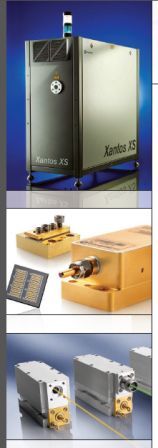Lasers for medical applications
Содержание
Introduction
Over the past half century, lasers have found their way into ophthalmology, oncology, cosmetic surgery, and many areas of medicine and biomedical research. The possibility of using light in treating illness has been known for thousands of years. The ancient Greeks and Egyptians used sunlight as a therapy and the two ideas were even tied together in mythology, with the Greek god Apollo taking responsibility for both light and healing. However, it has only been since the invention of the laser 50 years ago, that the potential of light in medicine has really been revealed. The special properties of lasers make them much better than sunlight or other light sources at targeting medical applications. That is why lasers use in the field of medicine is large and steadily growing. This growth is based on the versatility of laser light. The characteristics of laser light are defined by its wavelength, pulsed or continuous wave operation as well as its average power.
Popular lasers’ types
- Semiconductor Diodes (the wavelength range from 785 To 980 nm, with power levels from multiple Watts to multiple kWs);
- Excimer lasers provide pulse energies at the mJ level and beyond;
- Optically Pumped Semiconductor Lasers (uses a semiconductor chip instead of a laser crystal as the laser medium).
Medical applications
The unique capabilities to tailor laser light to a particular application opens up a wide space for laser tissue interaction. These interactions can be classified into four main categories:
- Photothermal Reactions;
- Ophthalmology;
- Photochemical Reactions;
- Photoablation.
Photothermal Reactions
Laser light absorbed by chromophores in the tissue is converted into heat. A typical application is photocoagulation, where the laser light is absorbed by hemoglobin to stop bleeding or to seal blood vessels. Another example is thermal ablation when laser light vaporizes tissue water for tissue cutting. This interaction requires laser solutions that have high average power and a wavelength that matches the absorption levels of target tissue.
Ophthalmology
In Ophthalmology, historically a core segment for us, lasers cover a wide range of applications. In the field of refractive surgery, it is used excimer laser based solutions for vision correction (LASIK). In retinal applications laser solutions for photo-coagulation is important application to treat wet form age related macular degeneration (AMD). Recent innovation allows OEM customers access to wavelengths that are optimal for photocoagulation. Yellow light couples effectively with hemoglobin which enables more efficient sealing of blood vessels (photocoagulation). Accordingly, this offers a more controlled healing effect and better patient comfort due to minimized heatload.
Photochemical Reactions
Photons absorbed by tissue molecules. Excited molecules can undergo chemical reactions. A prominent example is Photodynamic therapy (PDT) where a photosensitive drug is administered. Using specific wavelengths enables applications such as selective photo thermolysis. Tattoo removal is an example of this. This interaction requires laser solutions that have high average power and a wavelength defined by molecule absorption.
Photoablation
Laser light is used to break the molecular bonds in the tissue. Key applications include ophthalmology where UV laser light is used for refractive surgery of the cornea, as well as in lithotripsy where high energy laser pulses are used to generate plasma and shock waves that can break up kidney stones. Typical laser solutions operate in pulsed mode for high peak power and, depending on the type of tissue, have UV to NIR wavelengths.
